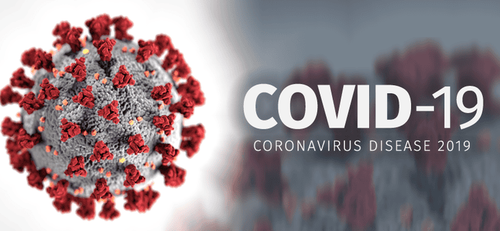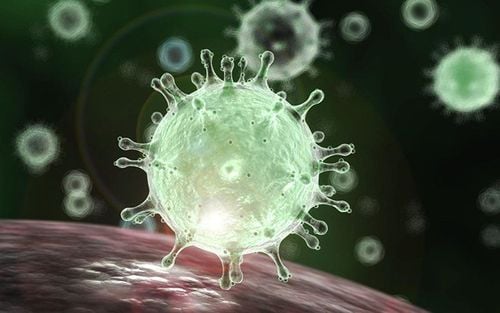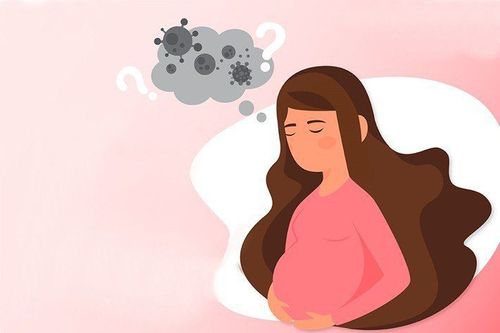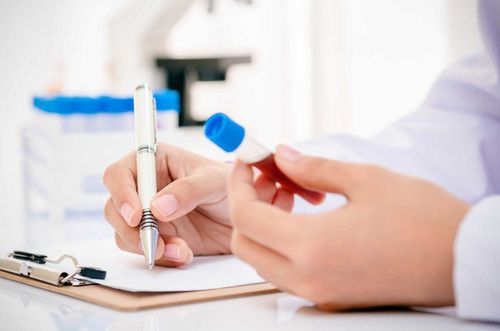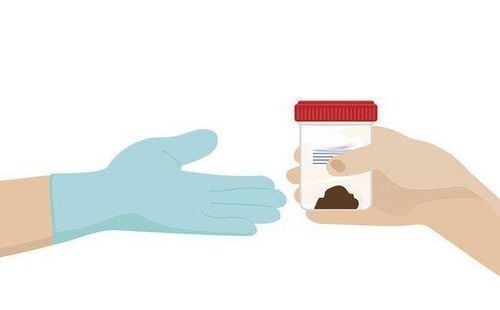This is an automatically translated article.
Article by Master, Doctor Mai Vien Phuong - Gastrointestinal endoscopist - Department of Medical Examination & Internal Medicine - Vinmec Central Park International General Hospital.
Fecal calprotectin concentration is approximately 6 times higher than plasma and its measurement is used as a surrogate marker of gastrointestinal inflammation. High fecal calprotectin levels in COVID-19 patients can lead to enteritis.
1. Overview
Severe acute respiratory syndrome Coronavirus 2 (SARS-CoV-2) exhibits high affinity for human angiotensin-converting enzyme 2 (ACE2) receptors. High ACE2 expression was identified in the oral cavity, type II lung alveolar cells, enterocytes in the ileum and colon, cardiomyocytes, vascular endothelium, proximal tubules, and bladder epithelial cells. One-third of patients with coronavirus disease 2019 (COVID-19) have gastrointestinal symptoms, with diarrhea being the most common symptom. Furthermore, critically ill COVID-19 patients often develop intestinal complications. Intestinal obstruction, gastrointestinal bleeding, and intestinal ischemia were the most common. Spontaneous intestinal perforations in COVID-19 patients are also increasingly seen in clinical practice. The SARS-CoV-2 RNA component was detected in stool samples of approximately 50% of COVID-19 individuals. Typically, fecal virus detection persists after virus clearance from respiratory samples, with a mean duration of fecal shedding of 17 days. It is possible that SARS-CoV-2 can also be transmitted by the fecal-oral route and the potential of this mode of transmission has been underestimated. The pathogenesis of gastrointestinal symptoms caused by SARS-CoV-2 may be multifactorial, including disruption of the intestinal mechanical barrier integrity, alteration of the gut microbiota, Increased translocation of bacteria and their metabolites, systemic inflammatory response to viruses, which seriously ill patients may be disproportionate to uncontrolled cytokine production and release.2. What is Calprotectin?
Calprotectin is a protein derived mainly from neutrophils. Upon neutrophil activation or death, calprotectin is released to the outside of the cell, where it plays a role in the innate immune response with a direct antibacterial effect. It is present in many body fluids, which corresponds to the degree of inflammation. The fecal calprotectin concentration is approximately 6 times higher than that in plasma and its measurement is used as a surrogate marker of gastrointestinal inflammation.Fecal calprotectin in COVID-19 patients was found to be a marker of enteritis, both in patients with and without gastrointestinal symptoms. Ojetti et al also found a significant correlation between the development of pneumonia in COVID-19 patients and high levels of calprotectin in the stool. Serum calprotectin has been suggested as a marker of severe COVID-19 progression, supporting innate immunity as a potential culprit of COVID-19 inflammation. It should be noted that peripheral blood neutropenia in COVID-19 patients partly reflects neutrophil migration to tissues and complement activation in different organs of the patient. COVID-19 contributes to tissue damage and neutrophil recruitment.
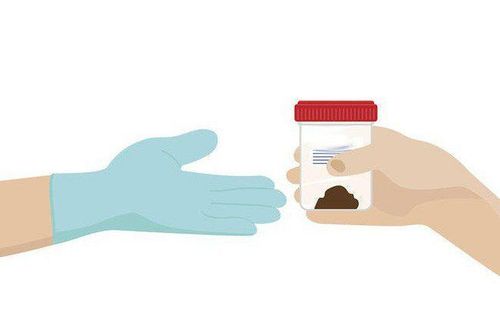
3. What do the studies say?
1/3 of patients with coronavirus disease 2019 (COVID-19) have gastrointestinal symptoms. Severe acute respiratory syndrome coronavirus 2 (SARS-CoV-2) RNA has been detected in stool samples of approximately 50% of COVID-19 individuals. High fecal calprotectin levels are a marker of gastrointestinal inflammation in the general population. A study was conducted in Italy on patients with pneumonia caused by SARS-CoV-2 admitted to the Department of Infectious Diseases (University Hospital of Trieste, Italy) from September to November 2020 consecutively included in the study. assist. Stool samples were collected and analyzed for the quantification of fecal calprotectin (normal value <50 mg/kg) and the presence of SARS-CoV-2 RNA by polymerase chain reaction (PCR). Group differences were determined between patients with and without diarrhea and patients with and without detectable SARS-CoV-2 in stool. The authors collected 51 adults (40 men) with SARS-CoV-2 pneumonia. Ten patients (20%) had diarrhea. Real-time-PCR of SARS-CoV-2 in stool was positive in 39 patients (76%), in all patients with diarrhea (100%) and in more than 2/3 (71%) patients without diarrhea .
Obesity is one of the most common comorbidities (13 patients, 25%). All obese (100%) patients (P=0.021) tested positive for SARS-CoV-2 in the stool. The mean fecal calprotectin level was 60 mg/kg [interquartile range (IQR) 21; 108]; Fecal calprotectin concentrations were higher in the group with SARS-CoV-2 in the stool (74 mg/kg, IQR 29; 132.5) than in the group without SARS-CoV-2 (39 mg/kg, IQR 14; 71). ) (P < 0.001). The authors concluded that high fecal calprotectin levels in COVID-19 patients correlated with the detection of SARS-CoV-2 in feces supporting the hypothesis that this virus could lead to enteritis.
4. Stool fecal SARS-CoV-2 is a finding in COVID-19 patients regardless of gastrointestinal symptoms
The results of this study by the authors confirm that SARS-CoV-2 in feces is present in about three-quarters of patients with COVID-19 pneumonia. Fecal calprotectin has been found to be a marker of enteritis, both in COVID-19 patients and in the general population. The authors' study demonstrates that hospitalized COVID-19 pneumonia patients have elevated fecal calprotectin levels, regardless of gastrointestinal symptoms. To the authors' knowledge, this is the first study to investigate whether fecal calprotectin correlates with intestinal shedding of SARS-CoV-2 in COVID-19 patients. In the authors' study, calprotectin levels were significantly higher in people with fecal impaction with SARS-CoV-2. This finding supports the hypothesis that inflammatory bowel disease can lead to a "leaky gut" syndrome with the potential to deliver the virus to other organs.
Although detection of SARS-CoV-2 in stool does not necessarily lead to more gastrointestinal symptoms, the presence of SARS-CoV-2 in gastrointestinal tissue often correlates with more severe symptoms . High fecal calprotectin in COVID-19 patients is likely secondary to increased intestinal neutrophil activation. In fact, SARS-CoV-2 can activate the extracellular trap of neutrophils and increase the level of intracellular reactive oxygen species. In this study, all obese patients had SARS-CoV-2 RNA detected in their stools. Obesity is one of the major risk factors for severe COVID-19 and poor clinical outcome, which is associated with a strong inflammatory response in both the general population and COVID-19 patients. This may justify more prolonged viral shedding in this group of patients.

5. Conclusion
The authors' study produced two main results:
SARS-CoV-2 in stool was present in about three-quarters of hospitalized patients with COVID-19 pneumonia and in all patients with diarrhea. Interestingly, all obese COVID-19 patients showed fecal viral expression. Elevated fecal calprotectin concentrations are a common finding in hospitalized COVID-19 patients, especially those with fecal fecal infection with SARS-CoV-2. The authors believe that their results may support the hypothesis that intestinal damage caused by SARS-CoV-2 is mediated by innate immunity (activation of complement and thus neutrophil migration. activation) may contribute to the pathogenesis of COVID-19.
Please dial HOTLINE for more information or register for an appointment HERE. Download MyVinmec app to make appointments faster and to manage your bookings easily.
References: Zerbato V, Di Bella S, Giuffrè M, Jaracz AW, Gobbo Y, Luppino D, Macor P, Segat L, Koncan R, D'Agaro P, Valentini M, Crocé LS, Ruscio M, Luzzati R High fecal calprotectin levels are associated with SARS-CoV-2 intestinal shedding in COVID-19 patients: A proof-of-concept study. World J Gastroenterol 2021; 27(22): 3130-3137 [DOI: 10.3748/wjg.v27.i22,3130 ]





